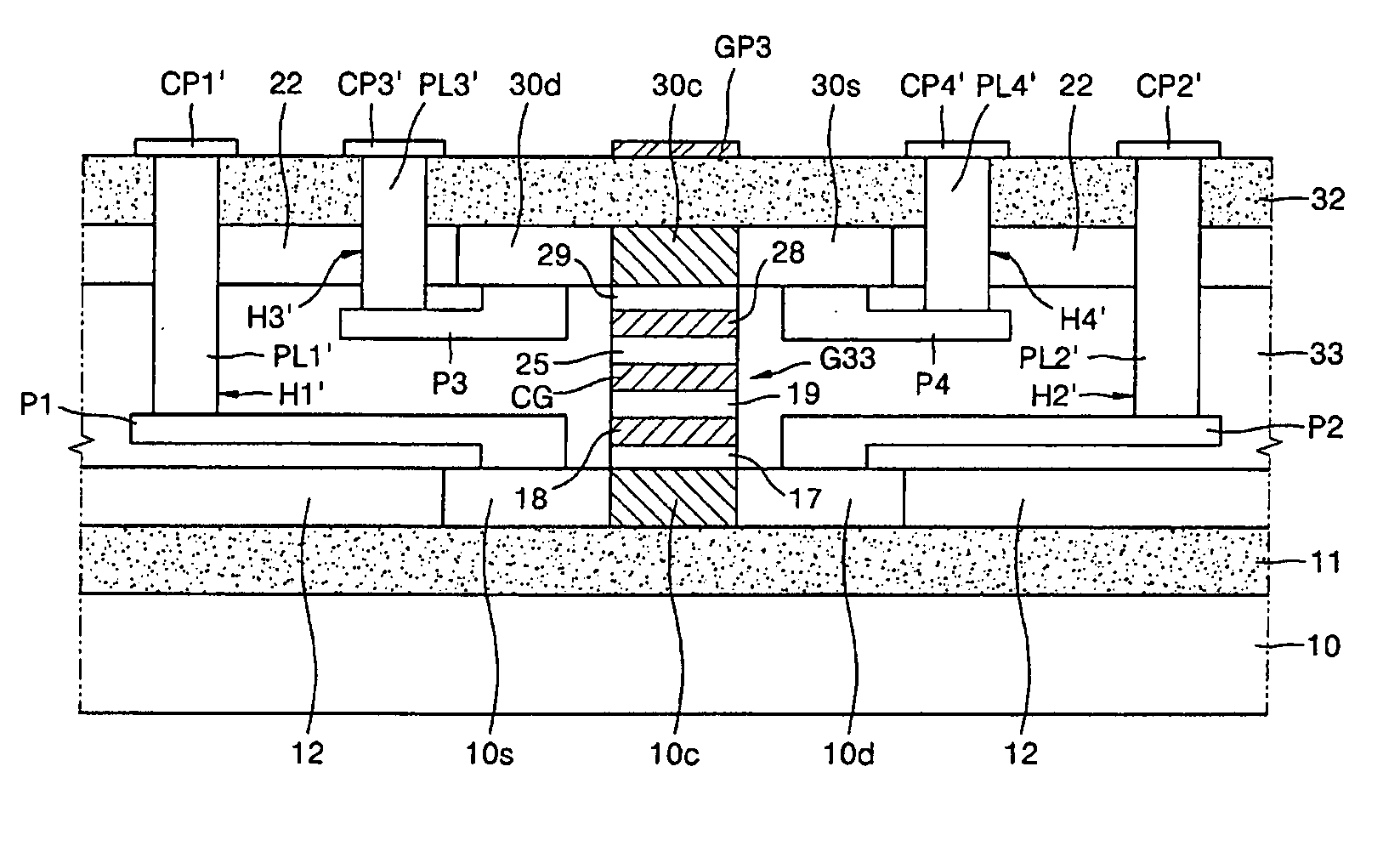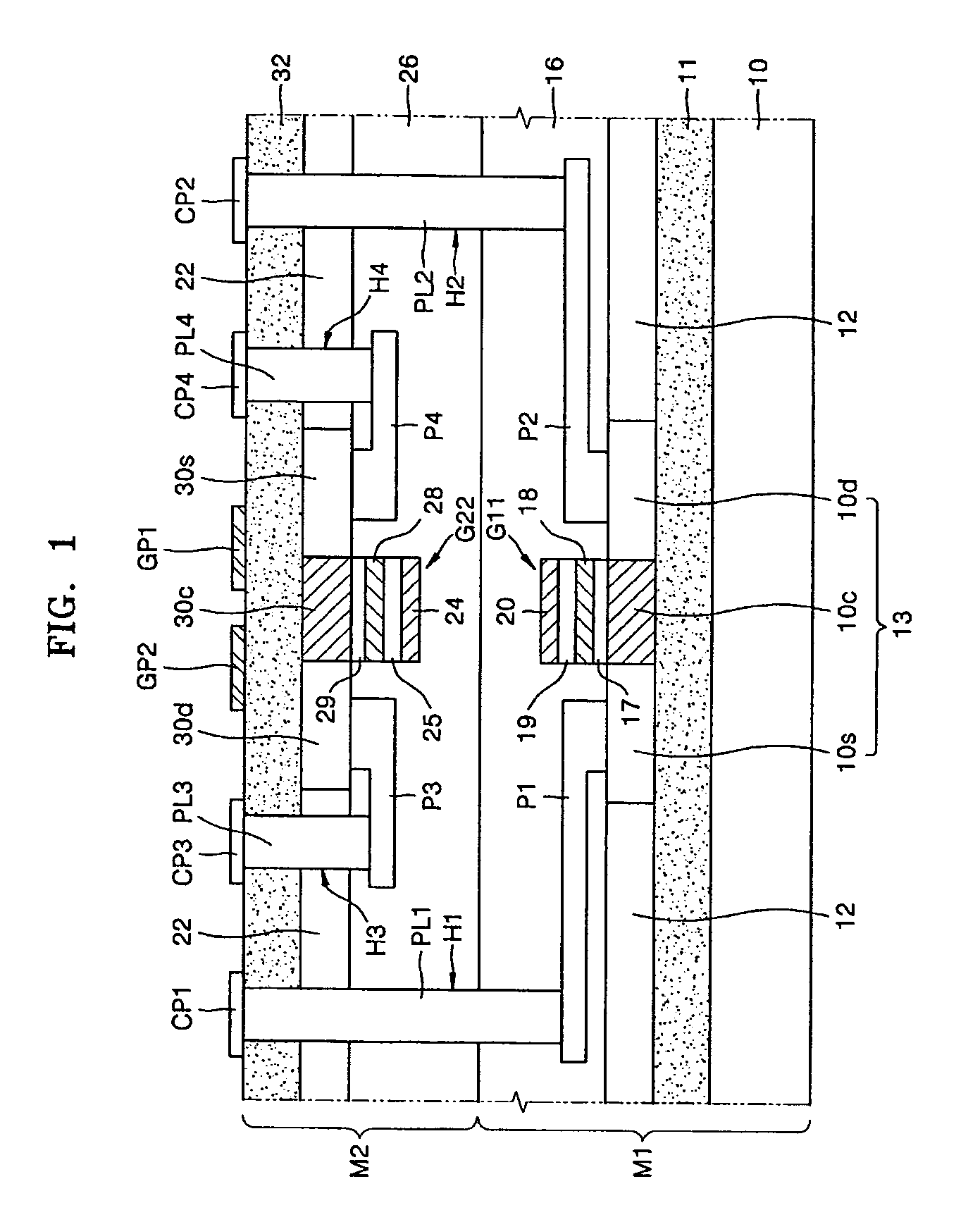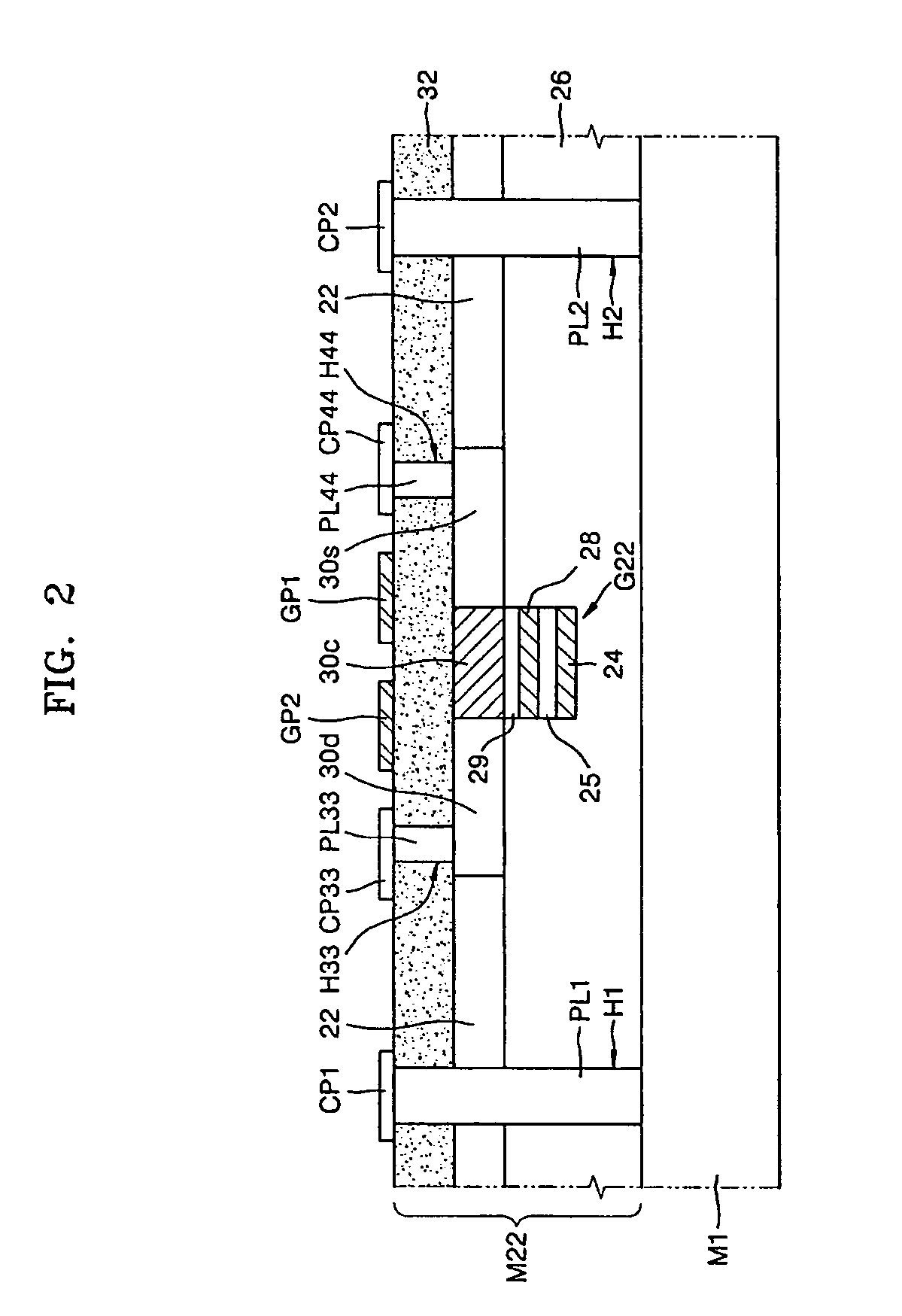Methods of operating and manufacturing logic device and semiconductor device including complementary nonvolatile memory device, and reading circuit for the same
a logic device and non-volatile memory technology, applied in semiconductor devices, digital storage, instruments, etc., can solve the problems of significant power dissipation, increase in operating resistance, and relatively slow reading speed, so as to improve operating speed, overcome the limitation of bit scale-up, and improve the effect of reading speed
- Summary
- Abstract
- Description
- Claims
- Application Information
AI Technical Summary
Benefits of technology
Problems solved by technology
Method used
Image
Examples
embodiment 1
[0118]Referring to FIG. 1, a first memory device may include a first nonvolatile memory M1 and a second nonvolatile memory M2, which is vertically and sequentially stacked. The first and second nonvolatile memories M1 and M2 are secured together. The first and second nonvolatile memories M1 and M2 may include a storage unit for storing multi-bit data in a gate stacked structure. The first and second nonvolatile memories M1 and M2 may be a P-type transistor and an N-type transistor, e.g., a P-type SONOS memory and an N-type SONOS memory, respectively, each of which can store data and function as a switch.
[0119]The first nonvolatile memory M1 may include a first substrate 10 and an insulating layer 11 disposed on the first substrate 10. Shallow trench isolation (STI) layers 12 may be disposed on the insulating layer 11 and separated from each other. A semiconductor substrate 13 may be disposed on the insulating layer 11 between the STI layers 12. The semiconductor substrate 13 may inc...
embodiment 2
[0129]A nonvolatile memory device according to a second embodiment of the present invention (hereinafter, referred to as a “second memory device”) may be different from the first memory device in that it includes a second nonvolatile memory M22 instead of the second nonvolatile memory M2. In the second nonvolatile memory M22, the same reference numerals are used to denote the same elements as in the second nonvolatile memory M2. Also, since a first nonvolatile memory M1 of the second memory device may be the same as that of the first memory device, a detailed illustration thereof may be omitted in FIG. 2.
[0130]Referring to FIG. 2, the second nonvolatile memory M22 may include the insulating layer 32, the semiconductor substrate (not shown) disposed on the insulating layer 32, and the second gate stacked structure G22 disposed on the semiconductor substrate. The semiconductor substrate may be surrounded by the STI layer 22. The semiconductor substrate may include the first impurity r...
embodiment 3
[0131]Referring to FIG. 3, a nonvolatile memory device according to a third embodiment of the present invention (hereinafter, referred to as a “third memory device”) may include a first nonvolatile memory M11 and a second nonvolatile memory M222, which may be sequentially stacked. The first and second nonvolatile memories M11 and M222 may be bonded to each other.
[0132]A first contact pad layer P11 and a second contact pad layer P22 of the first nonvolatile memory M11 may have different shapes from the first and second contact pad layers P1 and P2 of the first nonvolatile memory M1 of the first memory device shown in FIG. 1. Likewise, a third contact pad layer P33 and a fourth contact pad layer P44 of the second nonvolatile memory M222 may have different shapes from the third and fourth contact pad layers P3 and P4 of the second nonvolatile memory M2 of the first memory device.
[0133]Specifically, while the first and second contact pad layers P1 and P2 of the first nonvolatile memory ...
PUM
 Login to View More
Login to View More Abstract
Description
Claims
Application Information
 Login to View More
Login to View More - R&D
- Intellectual Property
- Life Sciences
- Materials
- Tech Scout
- Unparalleled Data Quality
- Higher Quality Content
- 60% Fewer Hallucinations
Browse by: Latest US Patents, China's latest patents, Technical Efficacy Thesaurus, Application Domain, Technology Topic, Popular Technical Reports.
© 2025 PatSnap. All rights reserved.Legal|Privacy policy|Modern Slavery Act Transparency Statement|Sitemap|About US| Contact US: help@patsnap.com



